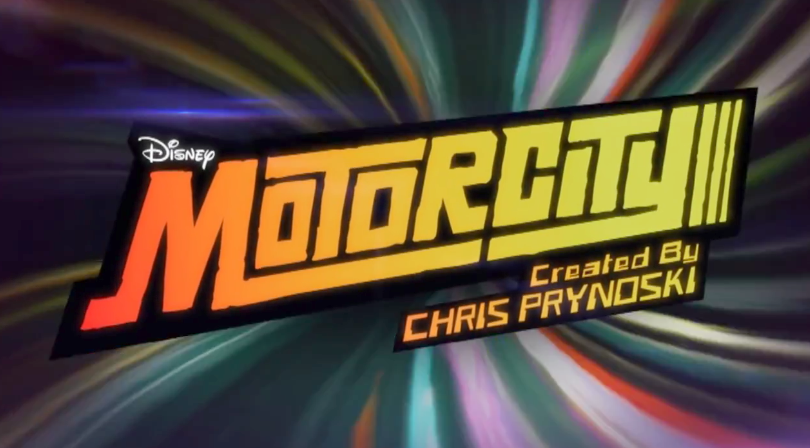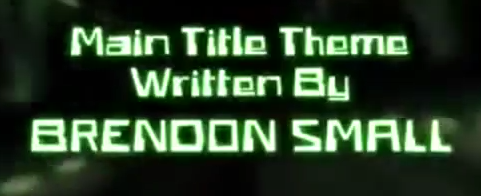Archive for August, 2015
The Problem of the Gendered Narrative
Posted by kjohnson1585 in Animation, Film, Television, Uncategorized, Writing on August 31, 2015
Buzzfeed got the animation world talking quite a bit with its recent article “Inside the Persistent Boys Club of Animation.” And while it fits perfectly within the contemporary, aggressive call for more women (and PoC) creatives in the entertainment business – a call I agree with one hundred percent – it’s Lange’s exploration of how certain genders depict certain types of narratives that has my interest piqued. She writes:
And that difference shows up on our screens. According to a 2012 study from the Geena Davis Institute, female characters made up 31% of speaking characters in primetime children’s shows — less than a third. Only 19% of children’s TV shows had an approximately equal number of male and female characters.
Later:
And this mentality is drilled into women studying animation. In a class at CalArts, Cotugno recalled, an instructor lectured on the difference between “feminine” and “masculine” story elements — “which is a little hard to describe, mostly because it’s fucking bullshit,” she said. Elements such as linear storytelling and big external stakes were “for men,” while relationships and emotional storylines were “for women.”
The whole thing is a must-read, but those two paragraphs struck me because it clarified a lot of thoughts I had about how women characters function in cartoons. As you can tell, I watch a lot of animated “stuff,” and what’s weird is how, overall, male characters are fairly developed from the start while women characters tend to fluctuate. This is in extremely broad terms, but part of me wonders if the kinds of stakes that we’ve inadvertently gendered is a bigger issue than just poor, outdated teaching ideas. It’s a top-down problem worth exploring in deeper detail.
A few weeks ago, I watched Flushed Away, an Aardman/Dreamworks collaboration that did mediocre at the box office, so as to assure that Aardman and Dreamworks would never work together again. It was a film that garnered mixed to poor reviews, but with my current run to catch up on animated films, I thought I’d give it a go, with the requisite that I would Twitter rant about its flaws. And while it was flawed, I was struck by how fascinating the “secondary” character, Rita, was. Rita was an extremely strong, well-developed presence, much more than Roddy, the titular main character. She was voiced by an extremely game Kate Winslet, and had the tenacity of Lara Croft with a warm, engaging emotional appeal like Pearl from the early episodes of Steven Universe. With a few tweaks, Flushed Away could’ve been an precursor to Mad Max: Fury Road – a generic film masking a strong, almost-feminist bent, in which Rita was the real star and Roddy, at best, an annoying sidekick. I can’t tell if it was Dreamworks or Aardman who missed that narrative, but it goes to how we perceive certain narratives and gendered character roles within a piece of entertainment.
I’m not sure how anyone, within the pre-production period of a film, not look at the development of Rita and recognize that she is the star, full stop. She possesses the “big external stakes” and the main thrust of the film is built upon her goals. Yet placing Roddy as the film’s lead is just part of the overall trend with large-stake narratives (he’s front and center on the DVD cover). There are plenty of great female characters, but they feel isolated, the lone feminine figure in weirdly, excessively male-driven worlds. Yet there’s a little bit more going on here, because opening up certain types of characters to the feminine sphere might cause a bit of hand-wringing. In the past 35 years, how many villains, or even antagonists, in films have been female who aren’t mothers? And what about the henchmen?
(The role of henchmen is worthy of a talk of its own. From second-in-commands to the lowly grunts, being a henchmen is a seriously male-driven occupation. How much of this is Standard and Practices, though? How much of this is the overall fear of placing female characters in positions that is primarily set up for bumbling and red-shirting? Because animation has become a medium driven to appeal to kids, the fear is that placing women in roles that usually get abused would be disrespectful and cause kids to follow suit, but that’s damaging to both boys and girls, since it ignore girls completely as well as encourages that kind of disrespect among boys. But I digress.)
One of the most important aspects of the early Disney Afternoon cartoons was its general focus on appealing to a broad, mixed fanbase. Both The Wuzzles and Gummi Bears clearly were looking to appeal to both boys and girls, but the focus shifted as Ducktales hit the airwaves. The shows that came after – Rescue Rangers, TaleSpin, Darwking Duck – had enough content to keep young women hooked, but they were mostly the fare of boys. In addition, the grouping dynamics of the primary cast of cartoons shifted. Girl-to-boy ratios went from 2:3 to 1:3; if a show present a group of mixed-gendered characters as the show’s leads, it has never provided more girls characters than boys. Mostly all kids networks mimicked this, despite hit shows like The Powerpuff Girls showing the potential of female character-driven shows. And really, not since Hey Arnold! have a show really explored a rich, varied group dynamic.
It’s clear that gendering narratives is both harmful and lazy. But what is insidious is how ingrained this idea has become. Not only are certain “types” of stories have to be told from the perspective of boy characters, but the minute details of those stories have to fit certain parameters. There’s very little focus on emotions or vulnerability, although that is getting better: Wander (Wander Over Yonder), Steven (Steven Universe), and Gumball (The Amazing World of Gumball) are much more prone to wearing their emotions on their sleeves, and acknowledging that those explicit feelings are valid.
Female characters are getting better as well. From the Mane6 of My Little Pony to the spunky silliness of Star from Star Vs. The Forces of Evil, TV animators are not only allowing women characters to star as leads, but to engage in their audacious adventures while also letting their emotions out for all to see. The wall limiting what types of stories one can tell with gendered characters is changing, albeit slowly, without necessarily falling into the kind of traps that hurt other narrative forms – restructuring the “Strong Female Character” as “Masculinized Female,” for example.
The biggest problem seems to be that in our attempts to push down gendered limits in entertainment, we’re pushing more and more into segregated content. Strong, singular leads are great, but shows that demand broad, mixed casts struggle intermixing gendered characters, from the testosterone-driven brotherhood that is the Teenage Mutant Ninja Turtles, to the female-coded Gems of Steven Universe. Which, inherently, is fine, but it hinders creative insight into how a full group of boys and girls can manage a situation and keep true to themselves. It’s a top-down problem, again – there’s an upcoming all-female Ghostbusters and an all-male one coming soon. There’s an all-female Transformers on the way, along with an all female DC-superheroes series coming as well. Genevieve Koski over the (sadly now-defunct) wrote about the problem with the “distaff counterpart,” but at the level of younger viewers, it implies that not only are the two genders markedly different, but that they can’t even interact without some kind of problematic “Mars/Venus” dilemma, as if two different genders thrive in two different parallel universes.
These ideas, taught to us as kids, have become de facto lessons, that the decision of creating a certain character male of female automatically define the basic beats of a story – beats that cannot embrace multiple genders in any narrative way. An evil force that wants to destroy the world has no ties to male or female characteristics, but more often than not, male characters are the heroes, thematically linked to paternal-leadership-protector themes. For the few women heroes that save the day, they’re linked to more emotional-maternal-caregiver themes. And it’s that core, basic thinking is more troubling than we realize. Thematic resonance is important to all narratives, but not when they’re built on vague stereotypes and gendered segregation.
On Motorcity and Exclusive Entertainment
Posted by kjohnson1585 in Animation, Television, Writing on August 13, 2015
While watching Disney’s 2012 Motorcity, I was immediately stuck by the show’s theme. Heavy on the aggressive drums and angry electric guitar, I wondered out loud, “Damn, it’s as if Deathklok themselves were scoring this show.” And sure enough:
Brandon Small, if you weren’t aware, also produced Metalocalypse, the Adult Swim show starting the infamous fictional metal band Deathklok, a bunch of goth-driven meatheads with amazing musical talents and even more amazing mystical abilities. Deathklok is loved by millions, even as their heavy metal melodies and viciously ludicrous stage shows kills thousands of people. To fans of that type of music, Deathklok is a genuine cult favorite, which the fake band’s music filling the playlists of many people. To non-fans, it’s a different story. Heavy metal is not a genre for everyone, and it must be acknowledged that it’s a type of music that is inherently alienating. To be clear, a lot of music is, but when you lean on that music as a premise and a narrative device, it becomes important to push the characters and story beyond that; otherwise, you’re essentially admitting that this show is only for a select crowd. There’s making entertainment for a niche audience, and there’s making entertainment for an exclusive audience. Metalocalypse, an 11-minute show on a channel defined by niche, could get away with it. Motorcity, on a heavily watched network driven by appealing to as broad an audience as possible, could not.
There’s a lot wrong with Motorcity at the premise/narrative/character level, and I’ll get into that, but most of those problems are triggered right at the start with the very inherent aesthetic thrust of the show. Motorcity has no qualms about its mission: to be relentless. It gives one hundred percent into its visual acumen, making racing, action, and high-octane excitement its fundamental purpose of existence. Every single thing on the show is defined by speed and power; it is the blood of a million Poochies surging together at once, high on cocaine and masturbating to the final act of the Wachowskis’ Speed Racer. Right at the start, Motorcity draws its line in the sand, declaring itself exclusive entertainment – strictly in the imaginative realm of young, white, 7-11 year-old boys. (Not to say that there isn’t a subset of girls or non-white kids who wouldn’t like it, but by the nature of our cultural signifiers, it’s clear that the show had one primary demo in mind.)
Motorcity is careless about its carelessness. It’s knows exactly what it wants to be, but it commits to doing just that with a shocking lack of insight or inclusivity. How could I make such a claim? Well, let’s consider that the show takes place in Detroit – a city that’s been going through a social/financial crisis for the last twenty-five years. Even as the show was pitched to Disney (which, considering the development process of cartoons, had to have been somewhere between 2007-2009), Detroit was struggling with its debts and crime rate, its unemployment and its reputation. And to be fair, there is a certain bold vision in taking that massive, systemic brokenness and re-contextualizing it as a tale of two worlds – the glorious, cultish, oppressive perfection of Detroit Deluxe, and the messy, chaotic, tumultuous environment of Detroit. But Detroit is a real city, with real problems, and there’s a certain callousness in taking that and marketing it as a world yearning to race freely in order to sell new Hot Wheel miniatures.
Motorcity cares so little for the real Detroit (imagine living in actual Detroit and watching this show), but cares even less about the people who live in their fictional Motor City. It’s actually surprising, almost absurdly offensive, how indifferent the show is to anyone outside of the Burners – the main group of five age-indeterminate characters tasked with protecting Detroit from Kane, the leader-tyrant of Detroit Deluxe. Certainly Motorcity has no obligation to explore the struggles of real-world Detroit and its people in any way, but it certainly should have explored its own duel-Detroit conception, and asked, exactly, what are the pros and cons of each version of Detroit, and how the citizenry is thriving or struggling within it. (For all its faults, Project GEEKER handled that pretty well.)
Not only does the show fail to engage in its own world-buidling, the ways in which it fails to do so are baffling. Nothing exemplifies this like “Vendetta,” an episode that is supposed to give history and nuance to Burner leader Mike Chilton, but instead turns the people of Detroit into utter useless zombies. Mike, who formally worked for Kane, was assigned to destroy a building in Detroit. On the eve of the destruction, Mike just notices that there are actual citizens still living in the building. The episode tries to play this as a crisis of conscious for Mike – the up-and-coming young soldier who has to question his morals and the various lines he’d have to cross towards his career – but the actual scene comes off completely tasteless. The people inside the building just sit there, staring wide-eyed like helpless animals. There’s not a single sense of civic protestation or argument. The people don’t even bother to flee the building until Mike has his change of heart and heroically leads the people out of the demolished building, the young Pied Piper leading the hive-minded rats out of the destroyed complex. There’s a million ways this scene could have played out (if the people were all asleep, for example: it still has issues, but at the very least the idea of taking them surprise provides a tighter context for lack of civil action). Motorcity opts for a lazy out, an out that suggests the people of Detroit (and Detroit Deluxe, for that matter) are useless sheep, inherently broken and useless unless a (white, male) leader guides them to their perceived safety.
And that’s just fucking gross.
Yet it’s the shockingly core thrust of the show’s entire run. The surface-level appeal, with its charismatic cast, seemingly complex structure, and violently intense animation, does its best mask a show so hollow that it defies expectation. Motorcity practically goes out of its way to make it less interesting than it should be, and when it finds itself in a narrative hole, it literally bullshits its way to a conclusion. After twenty episodes, I have no idea how Julie’s holographic powers work. I’m not clear if she’s actually in Detroit Deluxe or Motorcity and simply is projecting her holographic self elsewhere. Another example: the pilot suggests large scale gates block Kane’s infinite supplies of robots from entering regular Detroit; in subsequent episodes, robots come and go as they please. Even the action scenes – the very thing that Motorcity was noted for (and the very reason Titmouse was chosen to animate Turbo FAST), are purposely chaotic to hide their sheer lack of logic. The racing and fight scenes are structured in a hyper-energetic, anime-driven way, but (in what may be the most ironic thing of all of 2012) the animation is too good for it. Millions of lasers and explosions that constantly miss the protagonists only serve to lower their stakes. The few times where danger seems inevitable, the solution is either: 1) make it bigger, 2) make it faster, 3) stall until you can make it bigger or faster. When that doesn’t work? Throw lights and colors at the screen as a distraction, then say they won. Or hell, just ignore it completely. “The Duke of Detroit Presents…” straight-up insults its viewers when it places the Burners in a literal “can’t escape” situation and cuts to them later on, all alive and well. There’s a “jokey” reason for this, but it fails mainly because it’s representative of a show that attempted to slickly cut corners when it needed to drive straight.
And that may be the answer in the end: Motorcity is a joke, a flaccid excuse for a visionary animation reel, not a premise for a viable show. The penultimate episode, “Threat Level: Texas!” is an admission of sorts, retelling the previous episodes as viewed through the comic perspective of Texas, a character whose comic relief persona is not only unfunny but borderline sexist (he keeps confusing Julie’s name). None of the other characters mattered much more, really: Dutch just wants to paint and Chuck is a wussy hacker who doesn’t even know how to drive (his desire to keep that a secret is remarkable dangerous). That just leaves Mike, who is a borderline Mary Sue, and whose personal stakes fluctuate with each episode. But he’s there as the teenage icon upon which that remarkably narrow demo of white young boys would cling to, a demo predicted to be satisfied with speed, action, movements, and racing. Motorcity does little to give any incentive to court viewers outside that demographic, embracing its exclusivity with an uncomfortable, misguided sense of aplomb, but no amount of action intensity could overcome the changing demographic yearning for inclusivity. Motorcity courted its specific audience with as much high-octane hoopla as possible but only succeed in driving itself into the ground.




